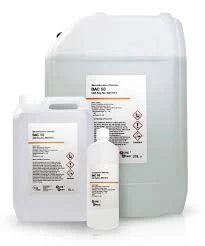Polyaluminium Chloride Application in Water Treatment Processes and Benefits
Polyaluminium Chloride in Water Treatment A Comprehensive Overview
Polyaluminium chloride (PAC) has emerged as a vital coagulant in the water treatment industry, owing to its effectiveness and versatility. It is particularly suitable for purifying drinking water and treating wastewater. This article delves into the characteristics, mechanisms, advantages, and applications of PAC in water treatment processes.
Characteristics of Polyaluminium Chloride
Polyaluminium chloride is a polymerized form of aluminum chloride. It generally comes as a yellow or white powder, soluble in water, and is produced by hydrolyzing aluminum chloride with alkaline substances. The resulting compound has a high positive charge density, which plays a crucial role in its coagulation properties. PAC possesses varying levels of basicity, typically ranging from 40% to 90%, which influences its performance in different water treatment scenarios.
Mechanism of Action
The coagulation process using PAC is primarily based on charge neutralization and sweep flocculation. When PAC is added to water, it dissociates into aluminum ions and hydroxides. These charged particles neutralize the negative charges present on suspended particles, colloids, and impurities in the water. This neutralization leads to the agglomeration of smaller particles, forming larger flocs that can be easily removed through sedimentation or filtration. Furthermore, PAC can also form a network that captures other impurities through a process known as sweep flocculation, enhancing the overall removal efficiency.
Advantages of Using PAC
1. Enhanced Coagulation Efficiency PAC is known for its superior coagulation capabilities compared to traditional coagulants like aluminum sulfate. It works effectively across a wide range of pH levels and water conditions, making it suitable for various applications.
polyaluminium chloride water treatment

2. Lower Dosage Requirements Due to its higher charge density, PAC typically requires a lower dosage compared to conventional coagulants. This leads to reduced costs in chemical usage and minimizes the sludge generated during treatment, easing disposal processes.
3. Rapid Settling Properties The flocs formed through the use of PAC tend to settle quickly, resulting in shorter clarification times. This characteristic is particularly advantageous in both municipal and industrial water treatment plants that aim to optimize operational efficiency.
4. Reduced Toxicity PAC has a comparatively lower toxicity profile than other coagulants, which is significant for the safety of drinking water and environments where wastewater is treated and released.
5. Broad Applicability Beyond drinking water treatment, PAC is also used in industrial wastewater treatment, paper manufacturing, and even in the food industry, showcasing its versatility as a coagulant.
Applications in Water Treatment
In municipal water treatment facilities, PAC is utilized in various stages including clarification and filtration, significantly improving the clarity and quality of drinking water. In industrial settings, it aids in removing contaminants from wastewater prior to discharge, ensuring compliance with environmental regulations. Additionally, PAC is employed in processes like oil-water separation, where it effectively aggregates oily particles, facilitating their removal.
Conclusion
Polyaluminium chloride is a cornerstone of modern water treatment methodologies. Its efficiency, economic advantages, and environmental safety make it an attractive option for utilities and industries alike. As global water quality concerns continue to rise, the role of effective and sustainable coagulants like PAC will become increasingly crucial in ensuring clean and safe water for all. The ongoing advancements in water treatment technologies will undoubtedly enhance the effectiveness and application of PAC in various contexts, driving further improvements in water quality management across the globe.
-
Water Treatment with Flocculant Water TreatmentNewsJun.12,2025
-
Polymaleic AnhydrideNewsJun.12,2025
-
Polyaspartic AcidNewsJun.12,2025
-
Enhance Industrial Processes with IsothiazolinonesNewsJun.12,2025
-
Enhance Industrial Processes with PBTCA SolutionsNewsJun.12,2025
-
Dodecyldimethylbenzylammonium Chloride SolutionsNewsJun.12,2025





